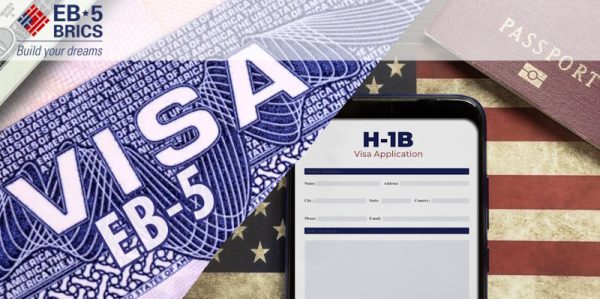
You need to be incredibly lucky to make it through the H-1B lottery, which is a sad position to be for somebody who has worked hard for years as an international student to earn a job offer from a US employer.
The sheer numbers involved combined with the fact that success depends, barring a few exceptions, on pure luck means a significant majority of those in the H-1B lottery process probably fail to get selected.
Here is a breakdown of H-1B visa numbers for FY 2024.
| Eligible lottery registrations | 758,994 registrations |
|---|---|
| Beneficiaries selected across two rounds | 188,400 beneficiaries |
| Annual H-1B quota | 85,000 visas |
There were nine registrations for each H-1B visa. Even after discounting multiple registrations, it’s safe to presume there were at least five beneficiaries in line for every single H-1B visa.
FY 2025 may have lower registration numbers due to the bar on multiple registrations for an individual beneficiary. Yet, it’s safe to say that FY 2025 numbers will reaffirm the point that there are far too many skilled workers seeking a very small pool of H-1B visas.
And that’s not even the biggest negative for the H-1B lottery registration. The biggest negative is that selection quite literally depends on a random lottery, which comes down to how lucky you were in the process.
An Alternative Option to the H-1B Route
If you did not, or fear you would not, make it through the H-1B lottery, then perhaps you should consider exploring a less uncertain alternative route. Instead of praying for your luck to change next year, you may consider the option of the EB-5 visa.
Unless you are planning on returning at the end of your H-1B status, you probably will end up applying for a US green card through the EB-1, EB-2, or EB-3 programs. The EB-5 visa allows you to completely avoid the H-1B route and qualify directly for your green card.
As a permanent resident, you can study or work for an employer, set up your own business or startup, or even take a break to plan your next move without worrying about things like visa status, visa restrictions, employer sponsorship, etc.
There are three specific advantages or benefits that make the EB-5 visa a particularly attractive option for an F-1 Optional Practical Training (OPT) student seeking to work and, eventually, settle in the U.S.
Concurrent Filing
One significant change introduced by the EB-5 Reform and Integrity Act (RIA) is that an EB-5 applicant who is already in the US on a non-immigrant visa can file the I-485 Adjustment of Status (AoS) petition concurrently with the I-526/I-526E petition.
A pending I-485 makes you eligible for interim benefits like an Employment Authorization Document (EAD) and Advance Parole (AP). The EAD allows you to work anywhere in the US with minimal restrictions while the AP gives you the freedom to temporarily depart from the US without having to worry about loss of status or renewal of your visa.
So, an F-1 OPT student who could not get through in the H-1B lottery can, through the EB-5 route, qualify for the EAD as well as AP in as little as six to eight months of concurrent filing.
Low Processing Times
Currently, there are no backlogs for the reserved categories of the EB-5 visa. This means there won’t be a significant gap between I-526E approval and the commencement of the two-year conditional permanent residence.
Unlike waiting times that could potentially stretch over decades under the EB-2 and EB-3 programs, an F-1 OPT student can look at becoming a permanent resident, albeit conditional, within approximately 12-15 months of filing the I-526 petition. If you choose to invest in a rural project, the priority processing can result in an even shorter waiting period.
Possible Recovery of Investment
It is very important to keep in mind that an at-risk investment need not be the same as a risky investment.
While a guaranteed return of investment is neither permitted nor possible, you certainly can try to minimize the investment risk to the lowest extent possible. Choosing the right EB-5 project can become a lot easier with the right investment consultant guiding you to an informed investment decision.
As a permanent resident, you may enjoy advantages like the ability to negotiate with employers from a position of strength, the freedom to switch jobs whenever you want, and protection from unfriendly immigration rule changes.
Combining this with possible—although never guaranteed—recovery of the EB-5 investment in approximately five to seven years—, an EB-5 investor may end up better off compared to peers who got selected in the H-1B lottery.
With H-1B selection dependent on luck and very long processing times for green cards through the EB-1/2/3 programs, an EB-5 investment can help you take charge of your professional career as well as your future in the US with clarity and confidence.




